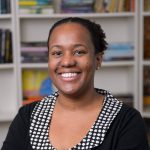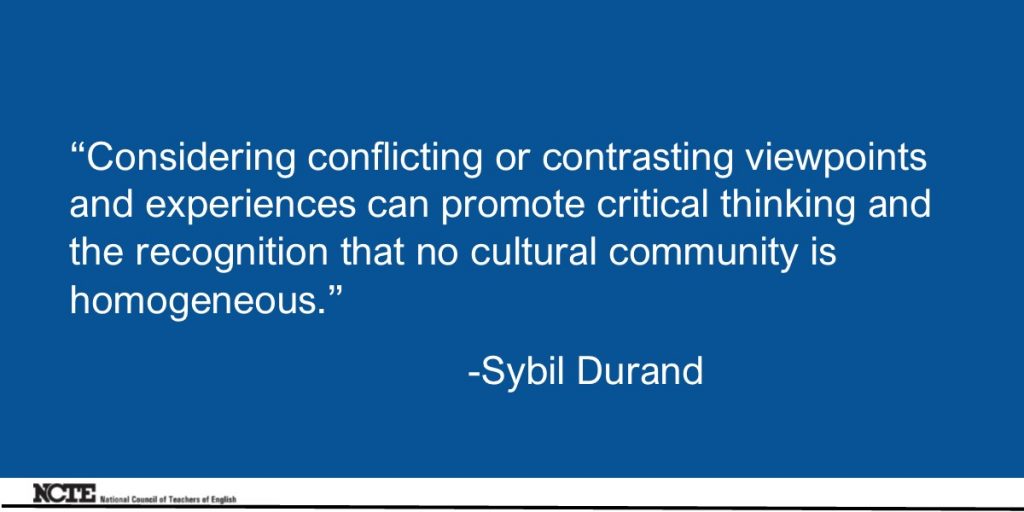This post is written by NCTE member, Sybil Durand.
As a former 10th-grade English teacher and current assistant professor in English education, my teaching and research have centered on literature for young adults. Young adult books give youth the opportunity to see their lived experiences reflected in literature. It is particularly powerful for students of color to read books with main characters of color and stories that privilege their cultural perspectives. Of course, books with diverse characters help all readers consider multiple perspectives about what it means to be a young person living in the world today.
These worldviews vary widely when considering the experiences of youth living in the United States today and throughout US history. Memoirs like Jacqueline Woodson’s Brown Girl Dreaming, for instance, invoke a difficult past and shed light on the continued struggle for civil rights for African Americans today. Stories like Yaqui Delgado Wants to Kick Your Ass by Meg Medina or American Born Chinese by Gene Luen Yang provide a glimpse into the lives of second-generation immigrant youth, including the challenges they face, like bullying related to race or gender. Likewise, books such as Tell Me Again How a Crush Should Feel by Sara Farizan, Aristotle and Dante Discover the Secrets of the Universe by Benjamin Alire Sáenz, and More Happy Than Not by Adam Silvera deliver insights on how youth negotiate their identities at the intersections of race, ethnicity, and sexuality.
To resist “the danger of the single story,” as Chimamanda Adichie discusses in her 2009 TED talk, we need books that tell many different kinds of stories about a particular cultural community. The authors mentioned above all position their characters within heterogeneous cultural communities. Considering conflicting or contrasting viewpoints and experiences can promote critical thinking and the recognition that no cultural community is homogeneous. In these ways and more, young adult literature, particularly young adult literature that features characters of color and engages social issues in critical ways, provides the opportunity to (re)consider how these issues play out in everyday life. What the authors mentioned above have in common is that they take seriously the often-difficult realities of young people and challenge readers to engage the differences and similarities of growing up in the world today.
 Dr. E. Sybil Durand is an assistant professor in the Department of English at Arizona State University, where she teaches courses on Young Adult Literature and Methods of Teaching English. Her research focuses on representations of youth of color in multicultural and global young adult literature. She publishes the column “Right to Read” with Dr. James Blasingame on censorship and young adult literature in The ALAN Review.
Dr. E. Sybil Durand is an assistant professor in the Department of English at Arizona State University, where she teaches courses on Young Adult Literature and Methods of Teaching English. Her research focuses on representations of youth of color in multicultural and global young adult literature. She publishes the column “Right to Read” with Dr. James Blasingame on censorship and young adult literature in The ALAN Review.

